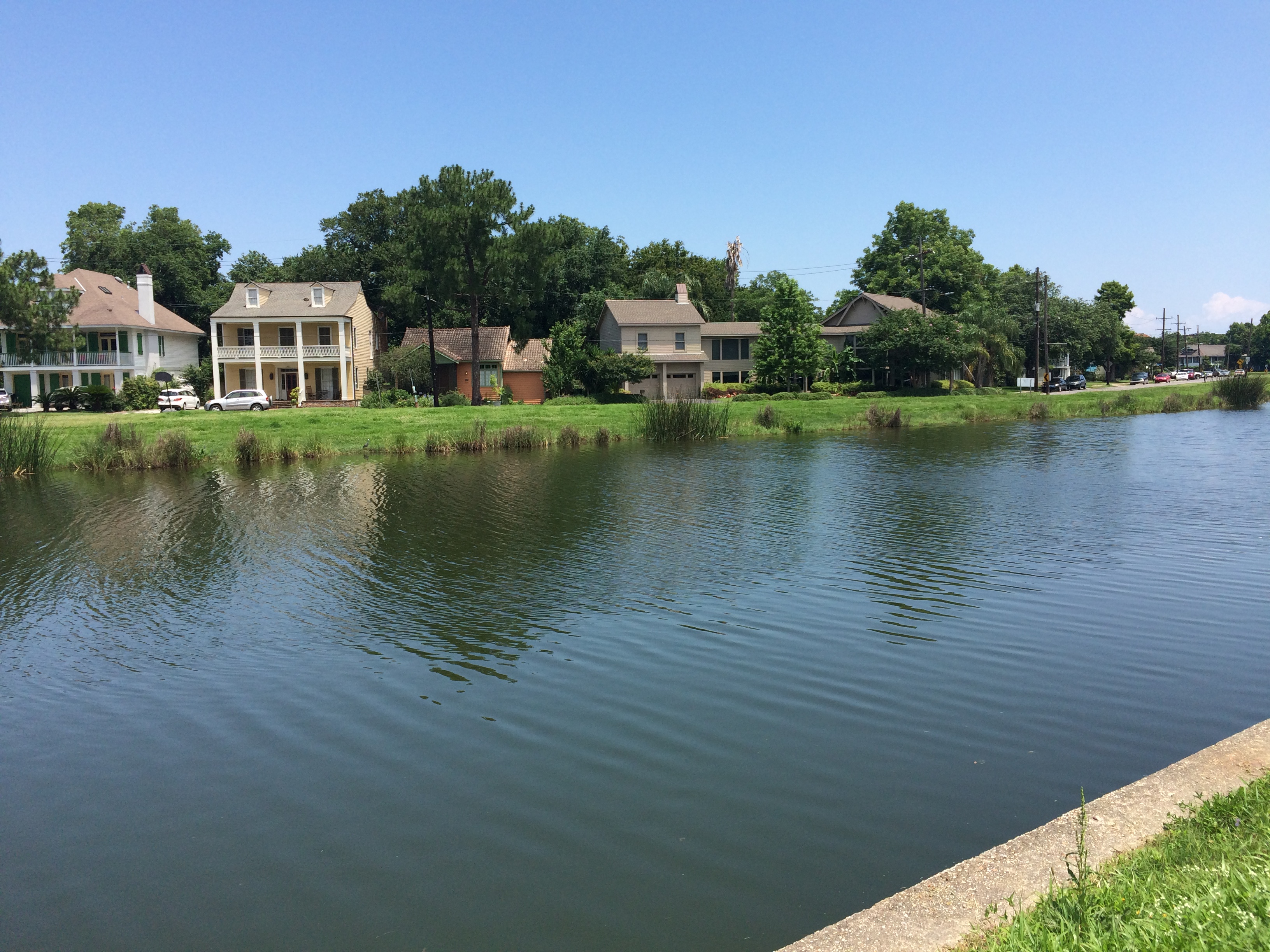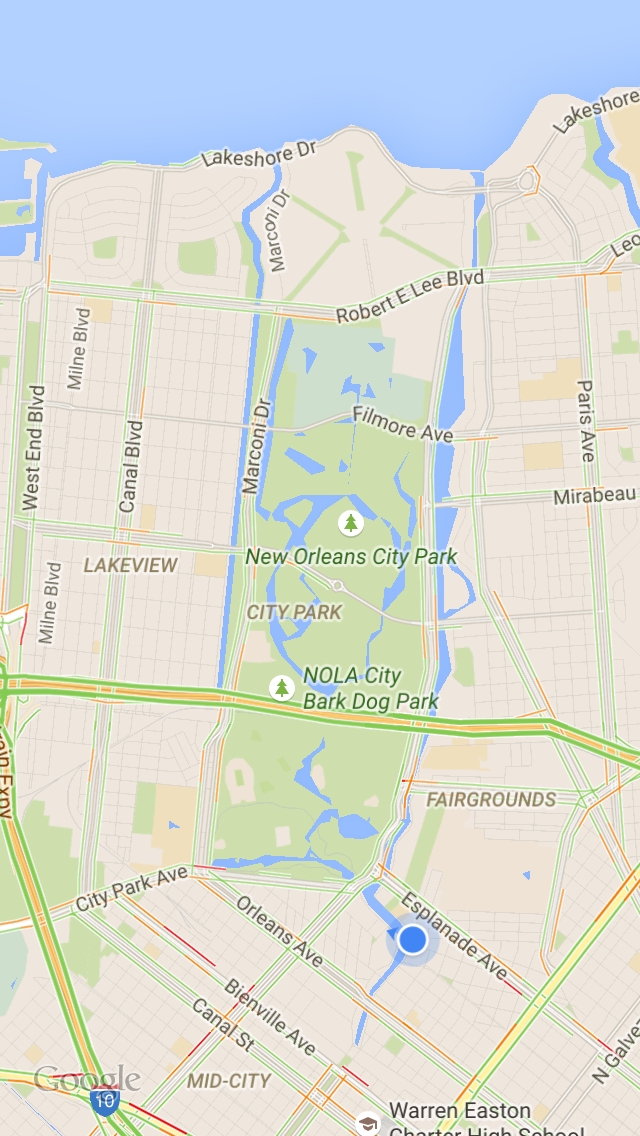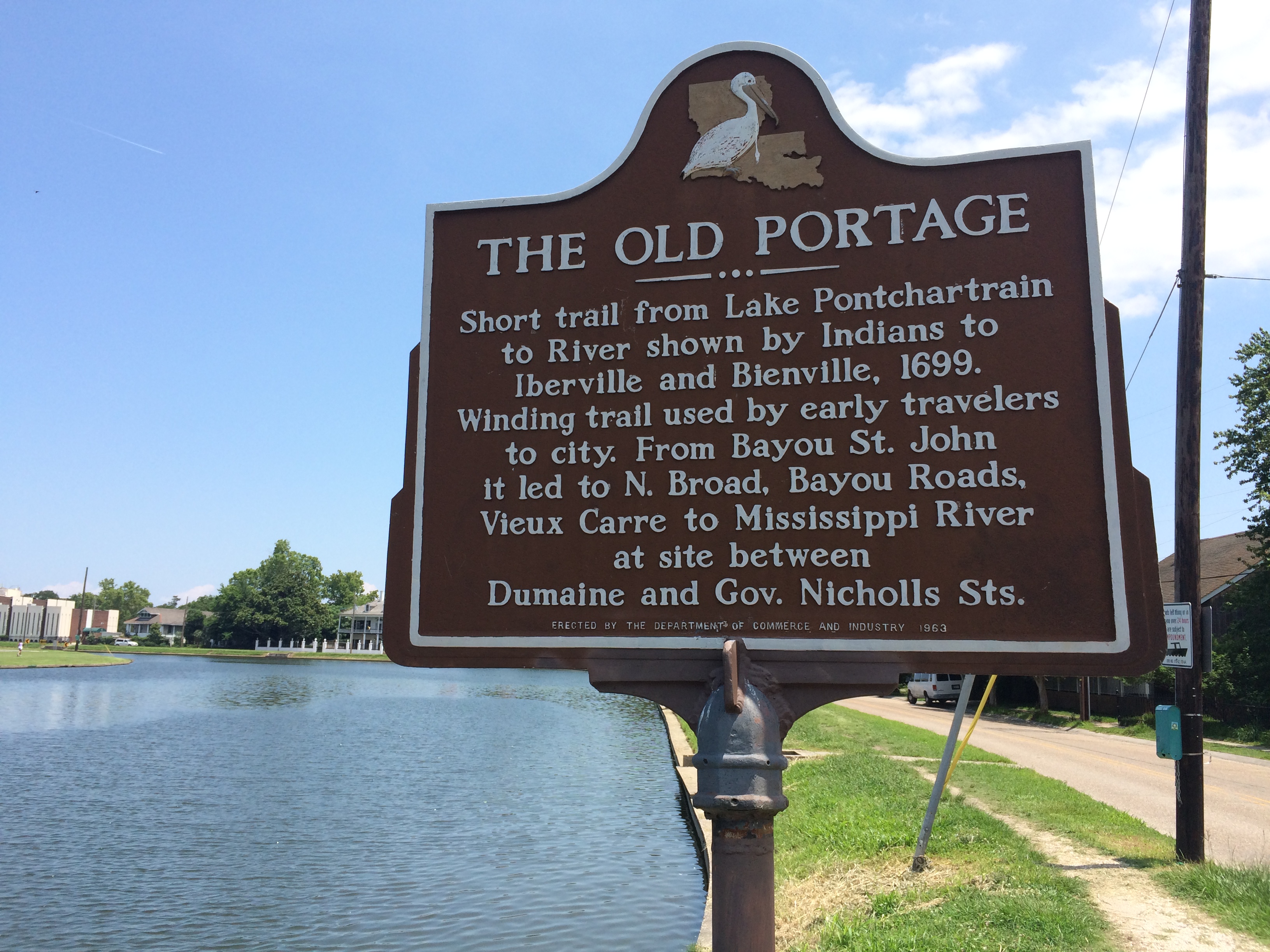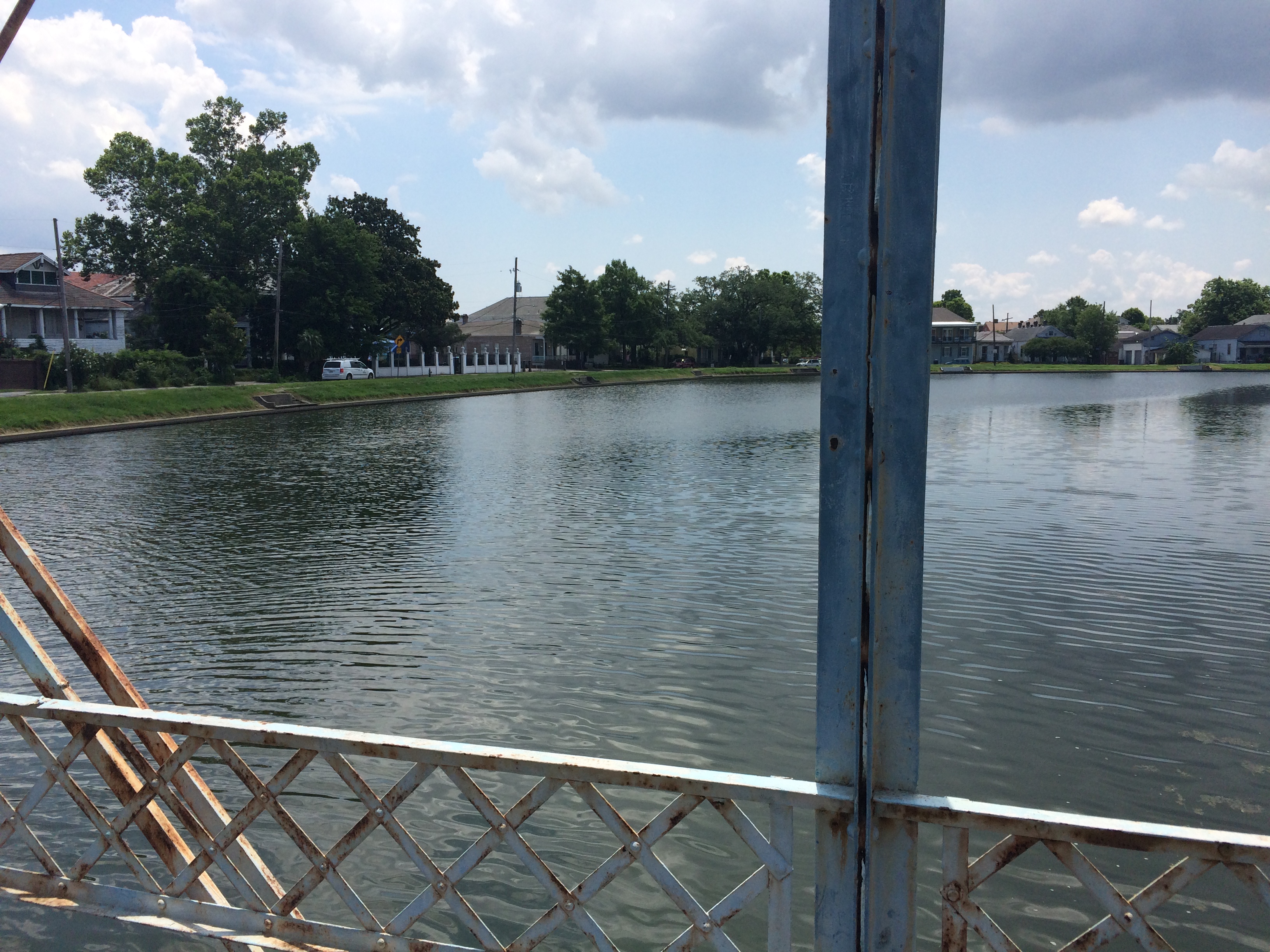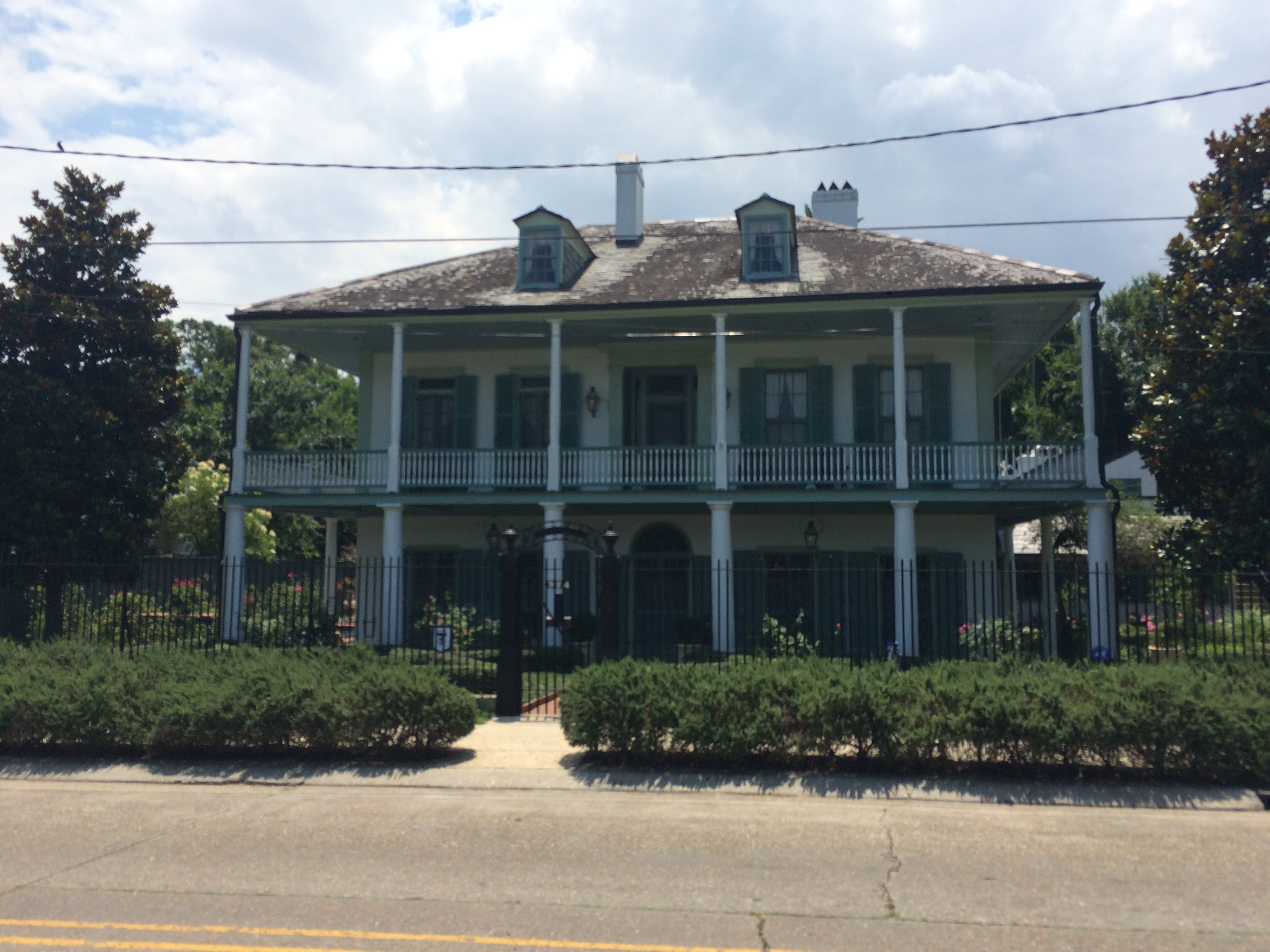
Fun fact: the historic blue-tinted bridge we all call the Cabrini bridge (above), built some time in the mid 19th century, was for many decades the bridge spanning the bayou at Esplanade. When they built a new bridge at Esplanade in 1909 (a much bigger, double-track bridge meant to accommodate streetcars, “autos,” and pedestrians, all on their way to the newly-improved City Park), they unhooked the old one from its foundations and floated it down to its present location on a barge. They originally wanted to re-erect it across from Grand Route St. John, but some engineers thought the curve in the bayou at that spot would cause problems. Perhaps some folks in the neighborhood already knew this fun fact (particularly those involved in the planned restorations of the Cabrini bridge) but I do know that, at least in the sources I’ve encountered in my research thus far, there has been considerable confusion on this point. Some even guessed that, based on old photographs, the old Esplanade bridge and the current Cabrini bridge were built to look like twins. Not so! Not so! They are one and the same.
And now, a couple of my favorite articles from the Historic Times-Picayune database from the past couple weeks of research:
September 17, 1904: “TWO MEN FOUND DROWNED. Went Bathing in Bayou St. John Near the Bridge. Locked in Each Others’ Arms. Neither Could Be Identified Up To Last Night.
Two men, whose identity remains a mystery at present, were found drowned in Bayou St. John, about a mile and a half from the Esplanade Bridge, yesterday forenoon, and every evidence points to accidental death.
The men must have gone in bathing a few days ago and one of them began drowning and his friend went to assist him. They soon had their arms locked about each others’ body, and both were drowned. Yesterday forenoon J. L. Debausque discovered the bodies and notified the police, who went out in a skiff and took charge of the remains of the men. Seeing that they were without clothing, the policemen felt the men had gone in bathing and were drowned, and after pulling the bodies away from one another, they made a hunt for the clothing. On one of the banks the clothing of the men had been piled up. There were dark and check trousers, a pink and white striped shirt, a black felt hat, a gray hat, a gray or slate-colored coat, black socks and low-quarter patent leather shoes, and a pair of button shoes. The bodies were conveyed to the Morgue, where they will be held for identification. The men had dark hair and rather dark complexions. One was about 19 years old, while the other was about 25 years old. They were big men.”
This story really gets to me. Reading hundreds of articles about street paving, garbage carts, “society events,” etc. and then coming across a story like this—
Such humanity in the detailed descriptions of their clothing.And they never let go of each other!The one who, apparently,couldswim, never let go of his friend. Or else, the one who could not swim clutched for dear life to the one who could, and brought them both down…. A story of the ultimate loyalty, or perhaps not….
And, lastly, a story of a naughty little boy who got what was coming to him:
February 18, 1909: “TAFT’S ALLIGATOR STEAK.
A boy named James Ware, residing at No. 933 North Hagan Ave., found a package on the bridge across Bayou St. John at Dumaine Street and took it home with him. On opening the bundle to his horror he found what appeared to him to be two human hands. A note included in the package only added to his horror, for it said, ‘Remaining part of this body will be found at L. and N. crossing, due south by east, near switch lock block signal.’ Inspector O’Connor turned the matter over to Sergeant Leroy, who at once reached the conclusion that the hands were really the claws of an alligator, and the mystery was solved.”
Questions: Do alligator claws really lookthat muchlike human hands? Even Inspector O’Connor wasn’t sure.
Why was there a package of alligator claws just lying on the Dumaine Street bridge, and why were they separated from “the rest of the body” stashed in some very specific, distant location?
James, James, James—I hope you learned your lesson! It sounds like you did.

